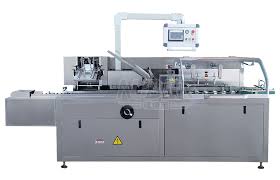A tablet press compresses powdered or granular materials into solid tablets in pharmaceutical and nutraceutical processing. The process starts with the filling stage, where an accurately measured quantity of powder is delivered to a die cavity on the press. High-end machines, such as those by Fette and Korsch, achieve accurate dosing with an accuracy rate as high as 99.9%, essential for maintaining consistent dosages in medication.
Once the die is filled, the machine starts the compression phase, whereby upper and lower punches press the powder inside the die cavity under extreme pressure, which may reach up to 10 tons of force, sometimes depending on the size of the tablet and formulation. Consequently, the particles bond into a solid tablet. The rotary tablet press is usually for large-scale production and has a number of compression stations that enable continuous processing, increasing output substantially. High-capacity versions are capable of producing more than 250,000 tablets per hour and thus are suitable in high demand situations.
Different mechanisms are inbuilt into tablet presses for uniformity and to prevent defects. The pre-compression stations apply preliminary force for the removal of air from the powder before the final compression; hence, any capping or lamination of tablets is prevented, ensuring a consistent texture in the pills and preventing structural weaknesses, which are critical in meeting the pharmaceutical standards. Machines that allow for pre-compression can enhance tablet quality even by up to 20%, as seen from studies conducted on the integrity of tablets.

Modern tablet presses have integrated the use of automated controls wherein operators can view in real time all key parameters, such as tablet weight, hardness, and production speed, from the touch-screen interfaces. In this way, one would be in a position to make instant changes in order not to interrupt the process but to ensure that every tablet meets its specifications. Optical sensors and cameras may also come installed for the detection of irregularities, such as those affecting weight or defective shapes, in which case defective tablets are immediately discarded to maintain quality control.
Lubrication systems within the tablet press increase efficiency, whereby frictional and wear losses on the punches and dies are minimized. Automatic lubrication systems increase component life by up to 30%, thus reducing maintenance and operating costs. Machines with such systems are considered very important due to their long life and cost-effectiveness in the long run, particularly in continuous-running facilities.
A tablet press represents an advanced solution for producing tablets in a continuous and high-volume manner with precision, ensuring quality control and multiple features to provide for uniformity, strength, and conformance to strict industry standards.